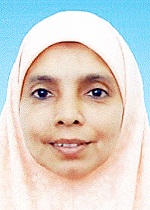Inventory of Urban Avifauna: A Comparison of Bird Species of Two Urban Sites in Dhaka, Bangladesh
Keywords:
Abstract
Modern cities have become human-modified atmospheres. Because of rapid urbanization coupled with the rapid loss of wild habitat land, cities are now regarded an extremely challenging ecosystems to sustain biodiversity. For supporting existing ecosystem rather destroying the natural habitation of wildlife, we need to learn to share with them. The diversity of avifauna is a significant ecological indicator to assess the quality of wildlife habitat. Many part of Dhaka had been covered by natural ecosystem in the early days. These green vegetation supported wide variety of wildlife, especially avifauna. Different types of bird species was communal in Dhaka, and many of these are now extinct, and the rest are critically endangered. Consequently, in this paper, a comparative study of two sites has been conducted to understand the ecology of the bird community and prepare an inventory of that group. Then a general guideline has been proposed to craft an urban ecosystem with inter-connected greenery in Dhaka city to maximize the diversity of avifauna.
Downloads
References
Collins, H.P., E.T. Elliott, K. Paustian, L.G. Bundy, W.A. Dick, D.R. Huggins, A.J.M. Smucker, and E.A. Paul., 2000. Soil carbon pools and fluxes inlong-term corn belt agroecosystems. Soil Biol. Biochem. 32:157–168. doi: 10.1016/S0038-0717(99)00136-4
Ditchkoff, S. S., Saalfeld, S.T., Gibson, C.J., 2006. Animal behavior in urban ecosystems: Modifications due to human-induced stress, Urban Ecosystems [Urban Ecosyst.] Vol. 9, no. 1, pp. 5-12. Jan 2006.
Edger, D.R, Kershaw, G.P, 1994, the density and diversity of the bird population in three residential comminutes in Edmonton, Alberta. Can. Field Nat. 108, 156-161.
Encyclopedia of Flora and Fauna of Bangladesh, Volume 26: Birds.
Eyal Shochat Susannah Lerman Esteban Fernández-Juricic, 2010, Birds in Urban Ecosystems: Population Dynamics, Community Structure, Biodiversity, and Conservation, Urban Ecosystem Ecology. 2010 (75-86)
Grimm, A. M., and Dias, P.L.S., 1995. Analysis of tropical–extratropical interactions with influence functions of a barotropic model. J. Atmos. Sci., 52, 3538–3555.
Marzluff JM. 2001. Worldwide urbanization and its effects on birds. Pages. 19-47. in Marzluff JM Bowman R Donnelly R eds. Avian Ecology in an Urbanizing World. Norwell (MA): Kluwer.
McKinney, M.L., 2002. Urbanization, biodiversity, and conservation.BioScience 52, 883–890.
Miller, J.R., and Hobbs, R.J., 2002. Conservation where people live and work. Conservation Biology 16:330-337.
Rebele, F., 1994. Urban ecology and special features of urban ecosystems. Global Ecol. Biogeog. Lett. 4, 173–187.
Sarkar, N.J., Sultana, D., Jaman, M.F., Rahman, M.K., 2009. Diversity and population of avifauna of two urban sites in Dhaka, Bangladesh. ECOPRINT 16: 1-7, 2009 ISSN 1024-8668 Ecological Society (ECOS), Nepal www.ecosnepal.com.
Sarkar, N.J., Sultana, D., Jaman, M.F., Rahman, M.K., Diversity, and population of avifauna of two urban sites in Dhaka, Bangladesh. ECOPRINT 16: 1-7, 2009 ISSN 1024-8668 Ecological Society (ECOS), Nepal www.ecosnepal.com.
Shochat, E., Lerman, S., Juricic, E.F., 2010. Birds in Urban Ecosystems: Population Dynamics, Community Structure, Biodiversity, and Conservation. Urban Ecosystem Ecology. 2010 (75-86).
Stephen S Ditchkoff; Sarah T Saalfeld; Charles J Gibson, Animal behavior in urban ecosystems: Modifications due to human-induced stress: Urban Ecosystems [Urban Ecosyst.] Vol. 9, no. 1, pp. 5-12. Jan 2006.
Downloads
Published
How to Cite
Issue
Section
License
Copyright (c) 2016 Asian Journal of Applied Science and Engineering

This work is licensed under a Creative Commons Attribution-NonCommercial 4.0 International License.








